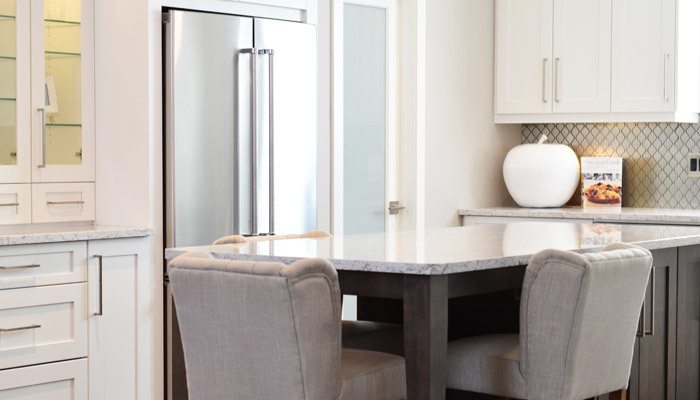Marble has been humankind’s trusted building material since the early days of Mesopotamia and beyond. Its rich, unique texture has added beauty and timelessness to historical monuments all over the world. Today, marble is commonly used in flooring, structural support, and countertops. It’s everywhere we go, but we don’t really know anything about it. Here are five things you probably didn’t know about marble but might want to.
#1: Marble Comes from All Over the World
Marble is classified as a metamorphic rock and is the result of limestone reacting to pressure and heat over a long period of time. Marble is cut into giant slabs and can be found all over the world, most notable in America, Italy, and Greece. The accessibility of marble in ancient European cultures allowed our ancestors to mine this readily available rock.
#2: Marble is Susceptible to Bacteria and Fungus
It may not look like a sponge, but marble is considered a highly porous material. While it might be the heaviest thing in your house, it is extremely susceptible to staining. Oil, wine, coffee, and dirt are absorbed below the surface of the marble, and once the stain is set, it is extremely difficult, even impossible, to remove. Because it’s so porous, marble is also prone to collecting bacteria and fungus. If you have a marble counter in the kitchen or bathroom, be sure to use a marble sealant as frequently as directed and to clean spills as soon as possible.
#3: Marble Has Many Uses
It’s hard to think that something that can hold up a roof can also be eaten. Marble is composed of calcite, which means that it’s high in calcium. The purest marble is often ground into powder and used as calcium supplements for farm animals. Powdered marble is also used as an antacid for humans and an acid neutralizer in soil. In fact, its brightness is used in many parts of the house, like your makeup, paint and other products that need whitening.
#4: The Whiter the Colour the Purer the Rock
Marble is found in a variety of colours, like salmon pink, blue, and black. The veins of colour give marble a refined, classic look. These colours represent the presence of other minerals, such as quartz, pyrite, and graphite. Pure marble has the least amount of minerals, which means that it has the least amount of colour.
#5: Marble Countertops Need Plenty of TLC
When we see a slab of marble, we immediately picture the Parthenon, the statue of David, great big banks, and enormous pillars. As previously stated, it’s false to assume that marble is impervious to wear and tear. While it’s a sturdy substance, it requires someone with patience and care to ensure its longevity. Many people are willing to accept the responsibility of taking care of their marble countertops because it is such a beautiful and classic material. However, if you live in a house with children who aren’t as keen to be caretakers, you might want to consider another more durable choice, like granite.
Marble can add beauty, durability, and refinement to any room. If you’re considering replacing your counters or floors with marble, contact Cuisines Nuenza or request a free consultation.

